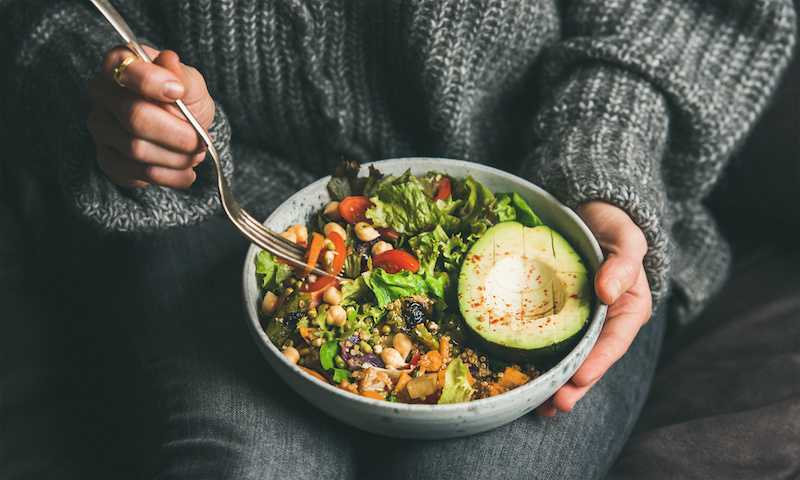What’s in That Energy Bar?
Ask any athlete about their approach to diet and nutrition and you better settle in for a lengthy lecture. That’s because few other populations put as much thought, time, and effort into what they eat to improve their health and performance.
Many are willing to invest a significant amount into filling their plate with the best foods to fuel them, and you better believe the food industry has taken notice.
Grocery store shelves are increasingly filled with sports-focused products designed to enhance athletic performance or reduce recovery time. And this is no passing fad. In fact, the market share of sports nutrition products is expected to grow nearly 8% over the next ten years. While this might sound like great news for those looking for more ways to get an edge on the competition or take their workouts to the next level it’s a bit of a double-edge sword for consumers.
Let’s be clear: sports nutrition products are no substitute for a healthy diet. That said, there are products that could potentially help you achieve your performance goals depending on the type and intensity of your activity.
Deciphering which products can deliver on their performance promises can be a bit of a nightmare unless you know what to look for. Although some ingredients can help, many are largely ineffective and some even downright dangerous. Here’s the full breakdown of which ingredients can up your game and which to steer clear of.
Antioxidants: All of that huffing and puffing you do during intense exercise results in the formation of free radicals; molecules that can damage cells and delay recovery time. Sure, exercise is good for us, but particularly intense or long-duration exercise can produce more of these free radicals than our body can handle. That’s where antioxidants come in. In theory, giving yourself a mega-dose of antioxidants, like vitamin C and vitamin E as well as coenzyme Q10 (CoQ10), will neutralize these free radicals. Our bodies are then able to recover faster and thus get back to exercising pain-free.
Great in theory, but research suggests the production of free radicals is actually an important component in muscle growth. That’s right, those muscle aches and pains might be inconvenient, but they are a sign your workouts are actually working. Interfering with this process by consuming products with large doses of antioxidants can actually hinder athletic performance. You really can have too much of a good thing!
But before you swear off antioxidants completely, you should know that it is important to get adequate amounts of antioxidants. Fortunately, antioxidant needs can easily be met by consuming fruits and vegetables which also happen to deliver on other nutrients that can aid in recovery.
Beetroot/beet juice: Talk about an ingredient that can help you “beet” the competition. Beetroot and beet juice are emerging as a must-have ingredient in every athlete’s diet because they serve as an excellent source of nitrate. This nitrate is converted into nitric oxide in the body, which expands blood vessels and thus allows for increased delivery of oxygen and nutrients as well as the removal of fatigue-inducing waste products from working muscles during exercise.
This isn’t all speculation either. Research has shown that drinking two cups of beet juice three hours prior to aerobic exercise can improve endurance. For many, downing two cups of beet juice isn’t that appealing so you’ll often find that beverages include smaller amounts, which means the taste may be more appealing, but the actual ergogenic benefit is negated. If you think that the beetroot you see listed as an ingredient is a better alternative than the not-so- tasty juice, think again. The dosage and efficacy of beetroot is still a bit of a question mark so as much as it might pain you to do it, stick with two cups of straight beet juice.

Beta-alanine: Meat, poultry, and fish all contain high levels of this amino acid which is used to make carnosine in muscles. Considering that carnosine reduces the buildup of lactic acid in the muscles it only stands to reason that beta-alanine should help prevent or delay the muscle fatigue associated with lactic acid.
However, studies are a bit mixed when it comes to how effective it actually is in doing so. In fact, performance benefits are likely small and only applicable to sports that require spurts of high-intensity activity followed by periods of rest, like football or lacrosse.
The timing and dosage of beta-alanine supplementation is very specific so be leery of any products touting this ingredient without specific recommendations for consumption.
Branch-chain amino acids (BCAAs): Leucine, isoleucine, and valine are categorized as BCAAs due to their chemical structure and these days they are appearing in everything from protein-enhanced beverages to sports gels. What makes these amino acids so special? BCAAs are processed differently in the body than other amino acids and, as a result, can provide energy directly to muscles during exercise. However, research shows that the inclusion of BCAAs in products geared towards endurance exercise has yet to show a performance benefit.
Athletes aiming to increase their strength may want to hold off on skipping BCAAs entirely though. There is some research to suggest that leucine is effective in increasing muscle mass and strength. However, the amount of leucine needed to do so can just as easily be obtained from eating protein-rich whole foods instead of resorting to more expensive products with added BCAAs.
Caffeine: There’s a reason you feel like you can tackle whatever the day throws at you after your morning cup of coffee. Studies have shown that 2 to 6 mg of caffeine per kilogram of body weight prior to exercise can enhance performance in endurance exercise as well in as sports like soccer that require short periods of high-intensity exercise.
Keep in mind not everyone experiences the same boost from caffeine, especially those who consume large amounts regularly. Many products advertise added caffeine, but be wary of those that don’t provide the actual amount. Chances are it’s less than what is required to truly provide any benefit.
That being said, more is not always better. Consuming more than 500 mg per day can lead to negative consequences like difficulty sleeping, restlessness, anxiety, and irritability. Not exactly ideal side effects during exercise.
Be sure to experiment with any caffeinated products during training to determine how much is needed to super charge you without throwing you off your game.
Electrolytes: Long gone are the days when athletes had to rely on water alone to meet their hydration needs. Beverages advertising “added electrolytes” make it seem like any drink that doesn’t include these electrically-charged minerals is far inferior. When making performance beverages, companies often add the primary electrolytes lost in sweat, sodium and chloride — along with other electrolytes like potassium and magnesium— to help athletes maintain proper fluid balance.
The benefit of adding electrolytes to beverages for hydration is not so clear cut though. When and how much we need to replenish the electrolytes we lose in sweat is a bit of a gray area because everyone has different sweat rates. Just think of the last time you exercised in the heat with a group. Some individuals were likely dripping sweat whereas others had only a slight hint of sweat glistening on their brows.
Similarly, the concentration of electrolytes lost in sweat is highly individualized. “Salty sweaters” will see a white grainy residue on their clothes or even caked on their skin when their sweat dries making them much more likely to have complications from hyponatremia, a condition where the blood is low in sodium. Fortunately, the average diet supplies more than enough sodium, and likely more than what is needed for electrolytes. Unless you are exercising in high-heat conditions for more than an hour or you are a “salty sweater” skip the fancy sports drinks and stick with water.
Ginseng: Claims of boundless energy associated with this herb make it an appealing option for athletes, which is why you see it appear in many beverages, supplements, gels, and the like. Regardless of what form it comes in, research has not found strong evidence to support the use of ginseng for increasing energy levels or improving athletic performance. That energy boost you may feel after consuming a product with ginseng is most likely coming from the other ingredient it is typically paired with; caffeine. There’s also a good chance that products touting ginseng as an ingredient contain little to no real ginseng at all. Ginseng root is very expensive so most products use negligeable amounts or use a different form that has not been as widely studied.
Plant-Based Proteins: Plant-based diets are all the rage these days. Brown rice, peas, soy, and other plant sources are popping up in bars, beverages, and as stand-alone powders just about everywhere. Athletes who recognize the importance of getting enough protein to build muscle are increasingly looking to these products as a healthy way to do just that. It is true that many athletes require more protein than sedentary individuals. The actual amount of protein recommended is contingent upon a number of factors including an individual’s body size and the amount and type of exercise they engage in.
Many assume products with added protein are a must for athletes with higher protein needs, especially those who follow a plant-based diet. But even athletes who require more protein can meet their needs by being purposeful with their food choices, plant-based or not, and including high-quality proteins in all of their meals and snacks. Ultimately these products are more about convenience than necessity, because most plant-based protein sources lack all of the essential amino acids. If you choose plant-based protein products opt for those that provide a variety of protein sources. Also be aware that many protein-infused bars and beverages are highly processed and contain added sugar and artificial ingredients.
Whey Protein: As with plant-based protein products, foods and beverages packed with whey protein are designed to give athletes an easy on-the-go source of protein. The biggest difference between the two is the amino acid profile. Whey protein contains all of the essential amino acids and therefore does not need to be paired with another protein source. Different forms of whey are used in products, primarily whey protein concentrate and whey protein isolate.
People who are lactose-intolerant should limit or avoid whey protein concentrate, but will be fine with whey protein isolate thanks to a lower lactose load. Just as with plant-based protein products, avoid the more highly processed options.
A good rule of thumb is to scan the ingredient list. If you see ingredients listed with names that you can’t pronounce skip it.



